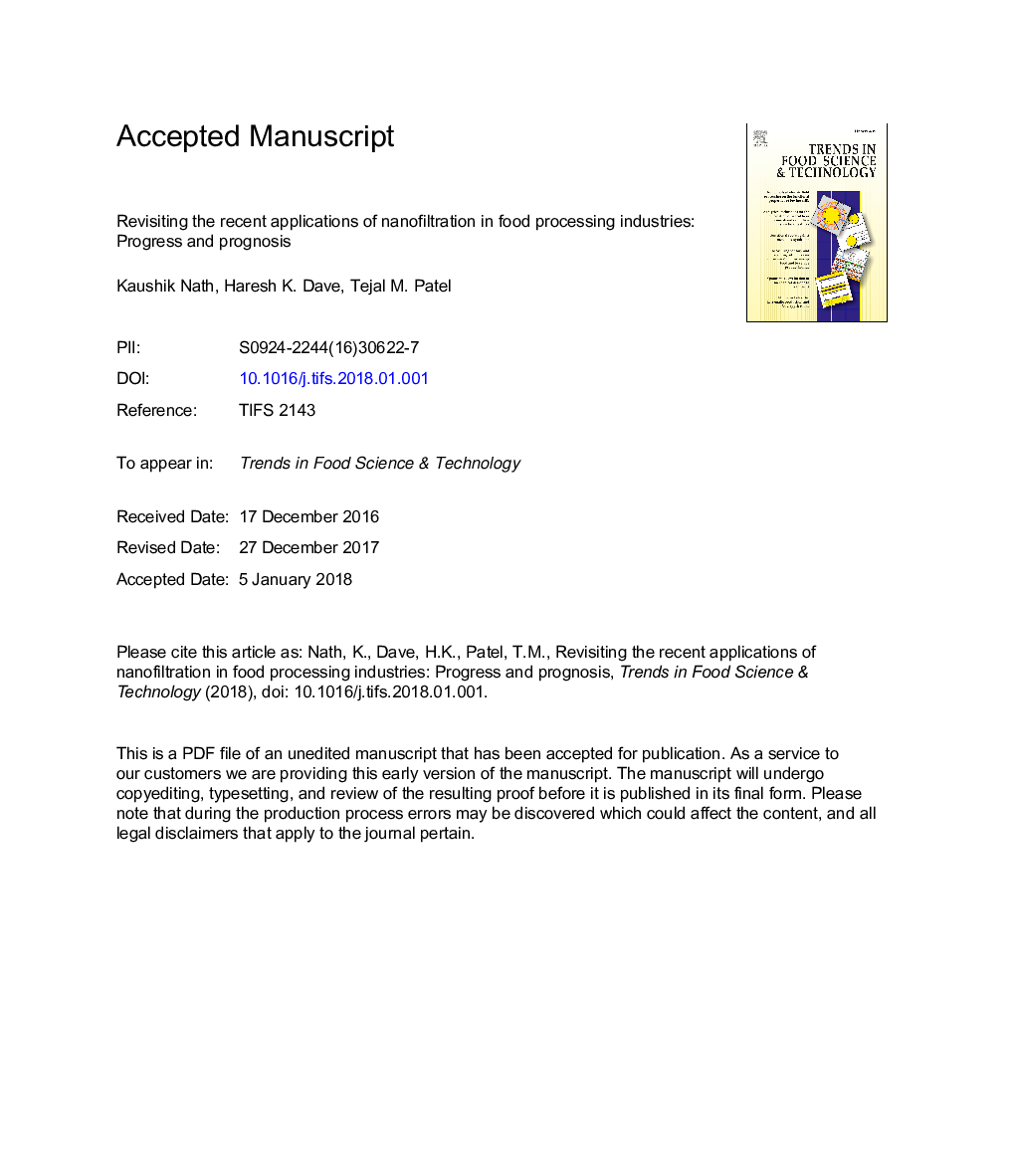| Article ID | Journal | Published Year | Pages | File Type |
|---|---|---|---|---|
| 8428393 | Trends in Food Science & Technology | 2018 | 45 Pages |
Abstract
The use of nanofiltration (NF) in food processing industries has evolved from a novel approach into a reliable and techno-economically attractive standard unit operation. The lower operating pressures compared to reverse osmosis, and unique selectivity of the membranes render NF as a less energy-intensive and eco-friendly downstream operation. NF finds its applications in concentrating, fractionating and/or purifying various edible products from the dilute streams thereby enhancing process efficiency to a great extent. It can significantly reduce levels of dissolved solids, colors, organics, hardness, turbidity, divalent and multivalent ions and facilitate the required desalting of permeate streams. Food-processing industries dealing with fruit-juice, beverage, dairy, sugar, lactic acid, and vegetable oils successfully employ NF in a myriad of applications. It is also used in wastewater treatment, recovery of value added components and solvents from food waste, deacidification and nutritional enrichments of certain food products. The present paper reviews the recent status of NF technology in food industries along with its trends and future potentials in the production of high quality foodstuff. Effects of important physicochemical parameters on the permeate flux, solute rejection and product quality are briefly assessed and critically compared with pertinent literature. Fouling propensity of membranes and strategies for its mitigation are also highlighted with special reference to food processing industries.
Related Topics
Life Sciences
Agricultural and Biological Sciences
Food Science
Authors
Kaushik Nath, Haresh K. Dave, Tejal M. Patel,
